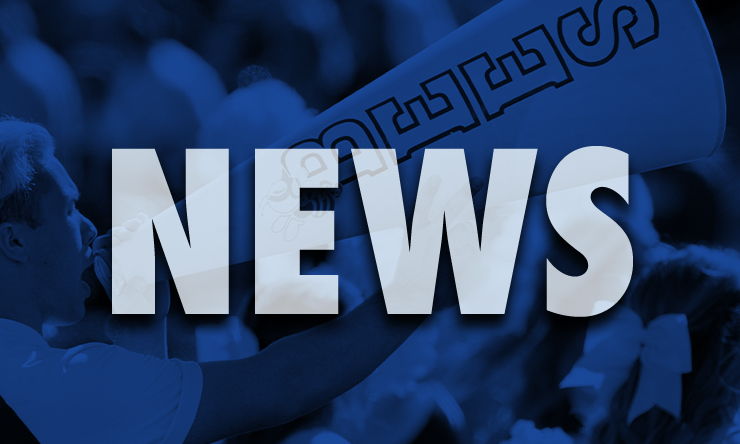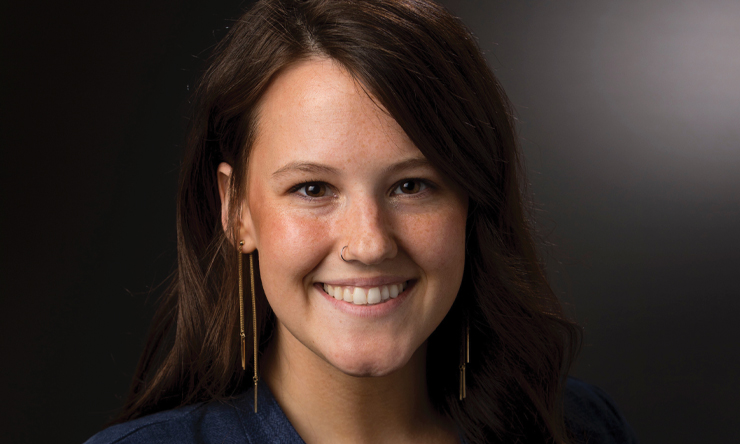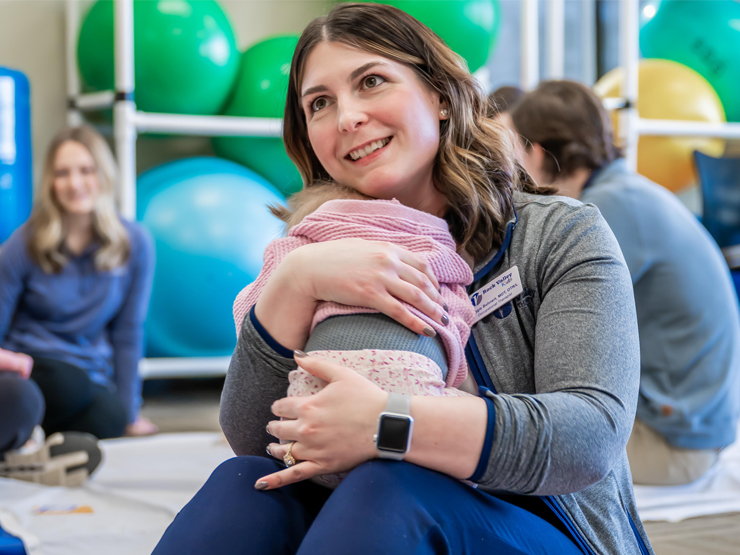It was a 6,274-mile trip for Munir Sayegh '11. Awarded a prestigious Fulbright research grant in Egypt, Munir traversed the Atlantic Ocean to take on a daunting task: To create a modern Arabic typeface for advertising, graphic design and marketing in the Arab world.
The son of an Iowan mother and Palestinian father, Sayegh is spending a year in Cairo examining Qur'anic (Koranic) manuscripts and other ancient Arabic letterforms, studying with typographers and calligraphers.
"In the Arab world, Arabic is not only the language of everyday life, it is the language of God and the visible expression of the spiritual world," said Sayegh. "But visual communication in the Arab world is currently immersed in a trend to westernize design and typography, and Arabic letterforms are being lost."
What was it like when you found out you received the Fulbright?
The unrest in Egypt meant that I did not find out for a long time. Honestly, I got to the point where I just needed to know one way or another, so it was a great relief. I danced around.
Why do you refer to Arabic as the language of God?
In Arab society, most people are Muslim and for many years, the Qur'an (Koran) was available only in Arabic. Arabic words are very beautiful. Stepping into a mosque you notice there are no pictures, just script, symbols and shapes. Arabic is similar to the importance of Hebrew or Greek when speaking of God or spiritual matters.
What's wrong with the current Arabic typography and letterforms?
Marketers-usually Western companies-are taking Latin typefaces and trying to develop their Arabic counterparts. The Arabic becomes mechanical and blocky, nothing like its true nature.
And the desired outcome?
An English/Arabic typeface family, classical and traditional, with similar elements of design and a cohesive look. In other words, a modern Arabic font with true Arab roots.
Let's shift away from your Fulbright Research for a minute. Tell me a story from your childhood.
With extended family in Iowa and Jordan, many summers were spent traveling to either DeWitt (Iowa), eating mashed potatoes and gravy, or to Jordan, where my Palestinian grandmother, Tayta, would lovingly prepare stuffed grape leaves and hummous (hummus).
I remember one of my visits to Jordan when I was about six years old. I met a boy my age at the store and he was trying to buy salt. I was trying to buy ice cream. He was handicapped in some way. He couldn't say the word salt, "Malih," let alone afford it. This experience totally changed my world view and touched me in the deepest way. When I returned to Jordan on my study abroad semester, I'm pretty sure I saw the same boy. I was helpless back then to help him but not anymore.
How can your Fulbright research help the boy in Jordan?
I called my senior honors Arabic calligraphy show "Obligation," thinking about that boy. But not only him. Refugees, and my father's and my heritage. I guess I would say my art show, my work on this typeface family, are an obligation to Palestinians refugees. Because maybe through design/visual communication I can show the Western world what Palestinian-Arabs are all about, what they are and who they are.
What about tensions between America and the Middle East?
I grew up in the Midwest and the stories we hear about the Middle East are usually quite different than what those in the Middle East are hearing about themselves and their countries. There is a lot of fear in the United States about Arabs and the Middle East, misunderstanding and misconceptions. It goes the other way too, of course, misconceptions of Americans.
Why do you think you can do this?
I was born to do this. Maybe this project is a culmination of a lot of different factors in my life. Something like this has to be part of who you are. And for me, it is.
What about you might surprise people?
I have a lot of unusual hobbies. I play the djembe African drum and I minored in French. In fact, I probably speak better French than Arabic. Oh, and I love giving haircuts!
What makes you good at what you do?
I would describe myself as a stereotypical man; I focus on only one thing at a time, hardly ever multi-task. For example, when I go shopping for something, I go into the store, look at the item-and buy it. That's it. This single-minded approach can serve me well when there is something I've got to get done.
What else should we know?
I would like to encourage other Ambrose students to apply for a Fulbright, figure out what they are passionate about, what they've always wanted to do or give to the world. I was supported throughout the Fulbright process, and there were about five or six professors that I can say really mentored me. Being a small school, the professors really care about our well being, share our passion for changing the world.
Your future after the Fulbright?
I plan to earn my master's degree in typography or diplomacy. As a Fulbrighter, I will be a cultural ambassador. I love diplomacy and talking with people; I could talk with people all day. But I also love art, so either way it's pretty much a win-win. And of course, I could always go to beauty school.
News
Share This Story



